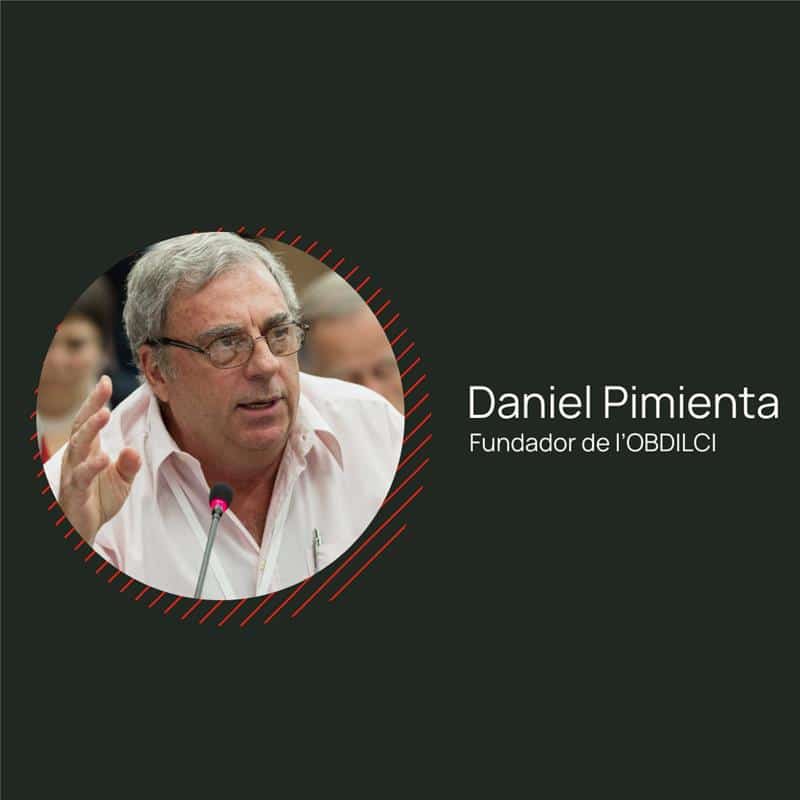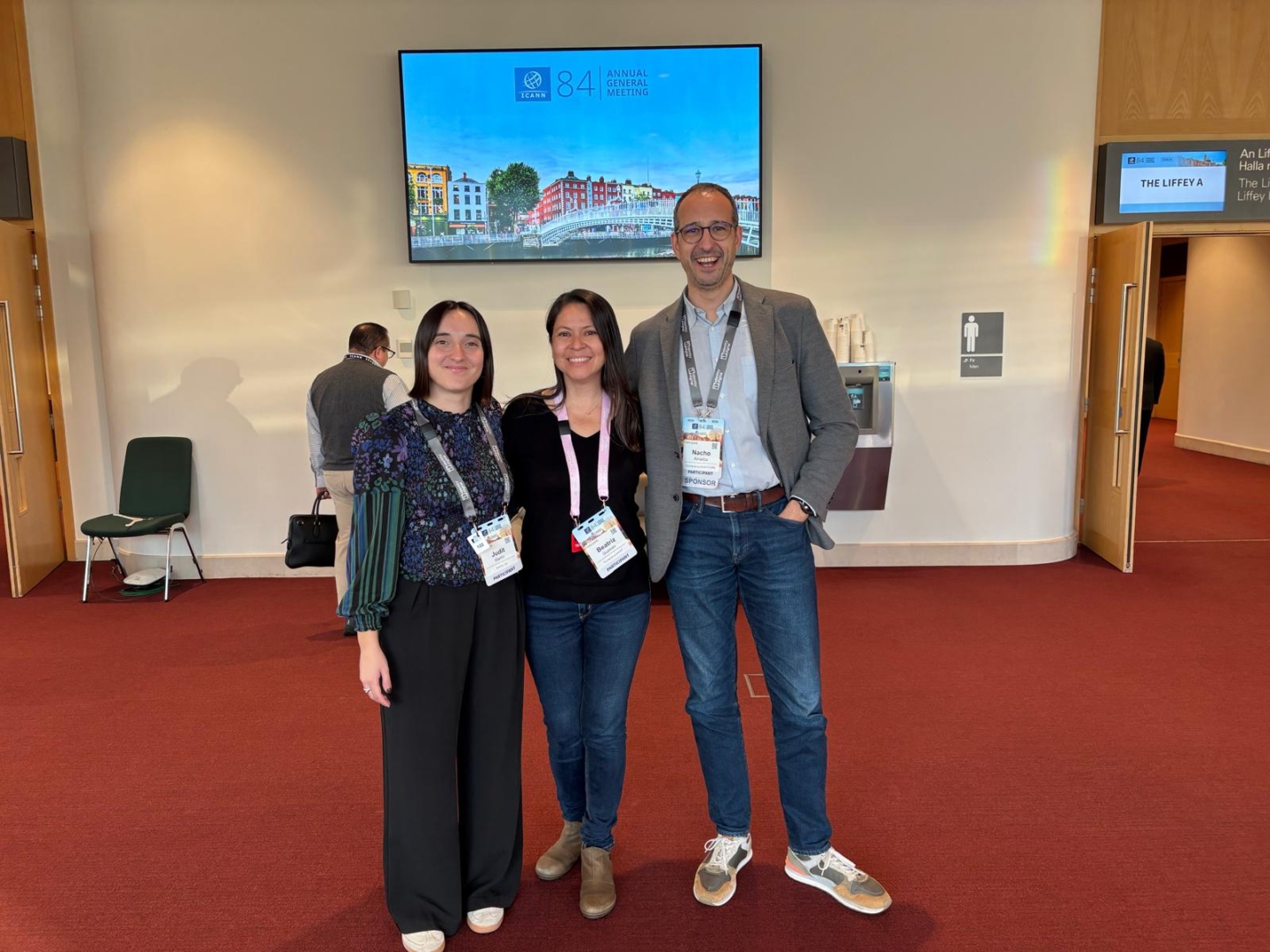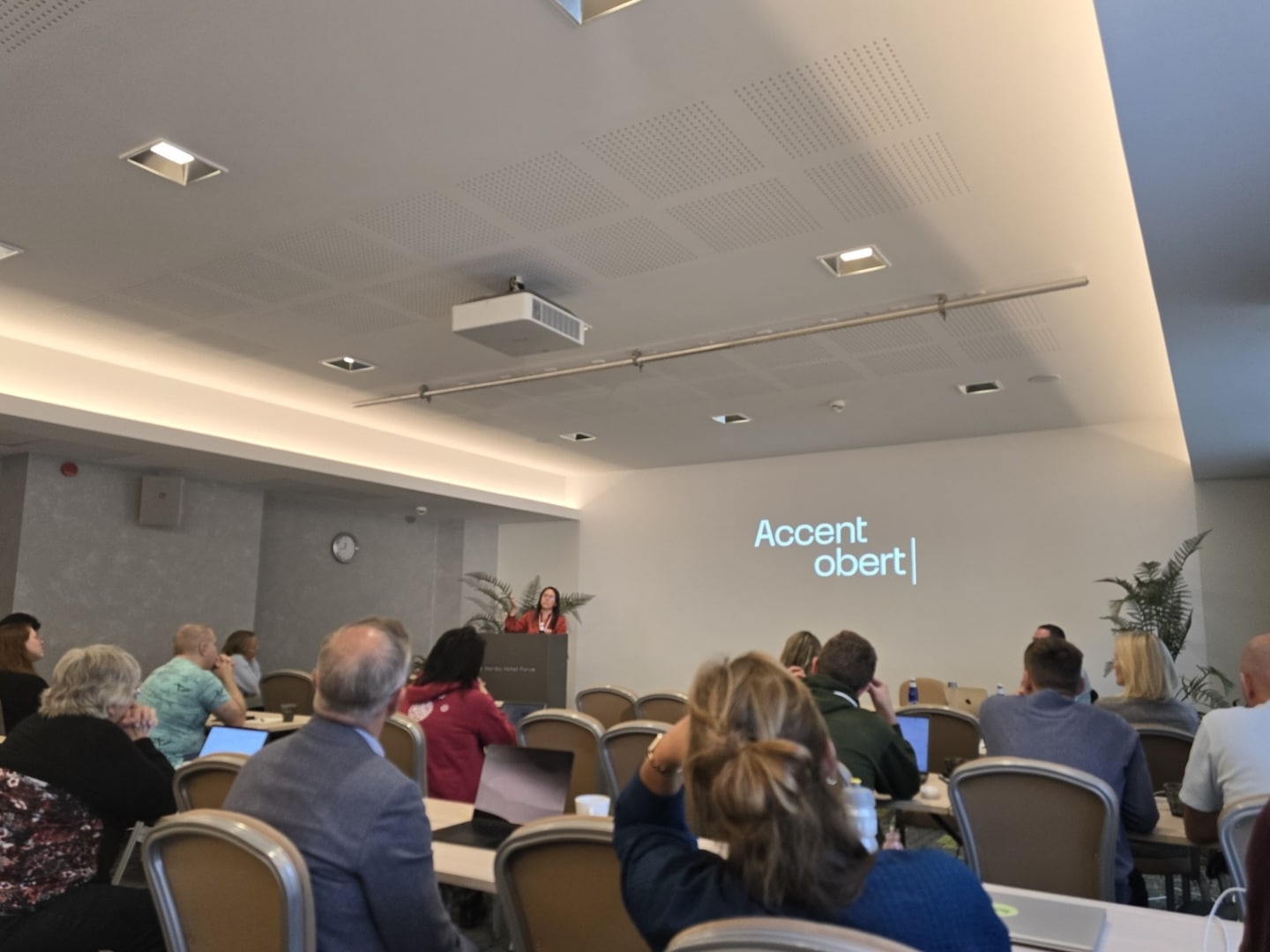An international study recognizes the leadership of .cat in the fight for a safer and more plural Internet

Franco-Moroccan expert Daniel Pimiento certifies that the Catalan example is the best antidote against the threat of a less diverse Internet, especially in linguistic terms
A new round of domains looms on the horizon in 2026. New extensions will flood the browser address bars in just a few months. Right now, a wide variety of actors from across the digital world are studying the feasibility of having specific domains to serve a tangle of interests and objectives in an increasingly vast Internet. But among all types of domains, linguistic top-level domains —the so-called linguistic and cultural gTLDs— are more relevant than ever in the history of the network.
This is the conclusion of the study “Identifying World Languages Best Suited for Linguistic gTLDs”, commissioned by the .cat domain and carried out by Daniel Pimienta, founder of the Observatory of Linguistic and Cultural Diversity on the Internet. In an interview with Accent Obert, Pimienta anticipated a profound paradigm shift: “Thanks to Artificial Intelligence, and once connectivity is fully resolved in industrialized countries, linguistic issues are climbing up the list of priorities.” A perspective that contradicts widespread common sense, which assumes the existence of a monolingual Internet in English: “English has long ceased to be the lingua franca online; instead, multilingualism prevails, supported by the increasingly powerful linguistic tools of Artificial Intelligence.”
However, Pimienta himself warns that not all languages reach this turning point under equal conditions. In this context, a dedicated domain —linguistic gTLDs— can be an optimal tool for different cultures to protect and project their presence on the Internet. It is a step that the Catalan-speaking community took 20 years ago, opening the door for other cultures around the world.
The .cat domain, a precedent that remains useful twenty years later
The creation of the .cat domain in 2005 was a milestone in Internet history: for the first time, a linguistic community obtained a top-level domain recognized by ICANN. It was not about a territory, a brand, or an economic sector, but a cultural community bound together by language, self-aware, and highly active in the digital sphere. Twenty years later, it is consolidated as essential digital infrastructure for the Catalan language —with 113,000 domains registered by individuals, companies, and organizations—. But it also maintains its leadership as a reference linguistic domain for other cultures worldwide that may now be on the verge of claiming their own recognition in the digital sphere.
This leadership is not symbolic. It is literally exemplary. Daniel Pimienta affirms it with strictly technical criteria, establishing a pattern based on the .cat experience for those aspiring to their own domain. He sums it up in three basic conditions: “First, it must exist in the digital world. Immediately after, it must have a critical mass of speakers. (…) And finally, it must have a critical mass of content.” Three criteria that seem simple to meet but which, in the linguistic reality of 21st-century Internet, are neither easy nor equally attainable for all cultures.
The Internet, an infrastructure that is also linguistically unbalanced and unequal
According to Pimienta’s study, there are currently 7,615 living languages documented worldwide. Of these:
• Only 447 have more than one million native speakers (L1)
• More than 94% of languages fall below this threshold
• And 81% do not reach 100,000 speakers
This reality is mirrored on the Internet and is even more aggravated: despite advances, the real digital presence of most languages is minimal or non-existent. Only around 750, about 10% of the total, have basic digital coding —according to Unicode—, and even fewer have a functional ecosystem with interfaces, search engines, translators, or services available in their language.
In this context, the Catalan language —not a state language but spoken in four states, with the complexity this entails— is today almost an exception. Thanks to .cat and an active social fabric, it is one of the languages with the most significant digital presence, and one of the few that has developed a specific top-level domain with its own governance and service criteria designed for its community.
From Esperanto to Romaní, the cultural domains of the future
So, which languages are best positioned to replicate the .cat model? The report analyzes the viability of new linguistic domains. The selection is based on robust criteria developed by the Observatory and tested on multiple occasions:
• Number of speakers (priority >1,000,000 L1)
• Percentage of speakers with Internet access
• Indicators of virtual presence (Google Translate, Wikipedia, dedicated websites, etc.)
• Existence of a representative entity capable of leading the project
• Absence of conflict with existing ccTLDs (cases where a language is spoken mainly in a single country domain)
Based on these criteria, Pimienta and his team identify 75 candidate languages, classified according to their potential level:
Potential: VERY HIGH
Number of Languages: 5
Notable Examples: Esperanto, Crioll Francès, Furlà, Romaní, Tamazic
Potential: HIGH
Number of Languages: 20
Notable Examples: Aimara, Hakka, Sami, Sard, Papiament, Tagal, Kurd
Potential: MEDIUM
Number of Languages: 24
Notable Examples: Occità, Quítxua, Maputxe, Ioruba, Guaraní, Asturià
Potential: LOW
Number of Languages: 26
Notable Examples: Ladí, Hassaniya, Wòlof, Flamenc occidental, Àlgic, Oceànic
The position of Esperanto, a planned language, may be surprising: “Esperanto is the artificial language with the largest number of speakers in the world, between 100,000 and two million depending on the source. It is not rooted in any country, virtuality is part of its nature, and it is very well organized at the institutional level. A domain for a language with these characteristics would be the most natural option, allowing for a practical and efficient centralization of its content,” Pimienta explained to Accent Obert. In contrast, other languages fared worse in the analysis: “At the other extreme, we find languages such as Guaraní, which seemed a prime candidate. But the reality is that 95% of its speakers are in Paraguay.”
This exercise is unprecedented in the digital field, helping to correctly visualize the position of Catalan in the digital world, without alarmism or false optimism. A study that recognizes the historical role of the .cat domain while projecting possible future scenarios in the face of the rapid evolution of the digital world, where the risk of invisibility is real and urgent for many cultural communities.
The .cat, a domain representative of the Catalan-speaking community
One of the key metrics used in the study is the number of registered domains per 1,000 speakers of the language. In this index, .cat stands out, especially considering that its number of regular speakers is far greater than that of other languages that already have their own domain.
Domain: .bzh
Registrations per 1,000 speakers: 96,4
Domain: .wales
Registrations per 1,000 speakers: 46,2
Domain: .corsica
Registrations per 1,000 speakers: 31,7
Domain: .cymru
Registrations per 1,000 speakers: 28,7
Domain: .cat
Registrations per 1,000 speakers: 23,9
Domain: .eus
Registrations per 1,000 speakers: 22,1
Domain: .gal
Registrations per 1,000 speakers: 3,2
This data reflects not only the quantitative success of .cat —as shown by its 113,000 registered domains— but also the strength of a model based on community roots and technical stability. Unlike other domains, often tied to regional governments or short-lived political projects, .cat has maintained solid, independent governance focused on service.
The .cat domain, from pioneer to catalyst
Because, twenty years later, the .cat domain is not just a digital identifier: it is critical infrastructure for the Catalan language and a success story that today serves as a guide for other communities aspiring to preserve their identity in the digital world. Using .cat means:
• Being part of an internationally recognized success story
• Choosing a secure, robust environment tailored to users’ needs
• Contributing to strengthening collective digital sovereignty
• Supporting and promoting the language in all its areas of modernization and use
And although a domain alone is not enough to strengthen a language —thinking otherwise “would be naïve,” warns Pimienta—, it is one of the necessary tools to encourage its use. Or, as Pimienta often repeats, a catalyst: “Chemistry has taught us that the magic of a catalyst lies in the precise doses of different elements that accelerate a reaction. If .cat is to be the catalyst for creating content in Catalan, it must find the optimal parameters to trigger that reaction.”
Each new registered domain helps consolidate a more plural, equitable, and culturally respectful Internet. The study confirms that .cat is not an anomaly but a viable and sustainable precedent for other languages and cultures worldwide. Its trajectory has not only provided visibility and functionality to the Catalan language but has also inspired a new way of understanding digital infrastructure: as a tool born within communities and placed at their service, beyond administrative borders and institutional competences.
And .cat users are not just beneficiary clients: they are active participants in this community-based model. Their trust is the best guarantee for diversity online, grounded in technical rigor and future vision. An experience that the .cat domain team, with the support of Accent Obert, now extends to other languages and cultures worldwide.

